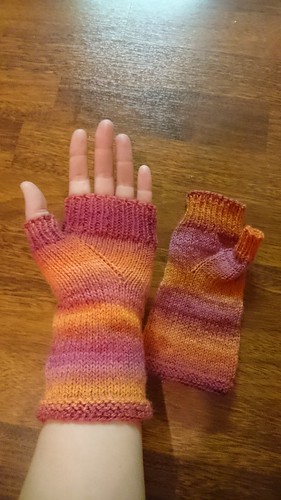For paraffin embedding, the pancreata were fastened overnight in four% paraformaldehyde and dehydrated prior embedding. Immunostaining was done on paraffin sections (five mm) or on cryosections (7 mm) as earlier explained [twenty five,35]. The pursuing  antibodies were utilised: rat anti-mouse CD31 and rat anti-mouse CD45 (BD Pharmingen, Franklin Lakes, NJ), goat anti-human VEGF-B167/186 (R&D Methods), rabbit anti-mouse NG-two (Chemicon, Hampshire, United kingdom), rat anti-mouse neutrophils (clone7/4), rat anti-mouse F4/eighty (AbD Serotech), rabbit antiKi67 (Novocastra laboratories, Newcastle, United Kingdom) the in Situ Mobile Loss of life Detection Package, POD (terminal deoxynucleotidyl transferase-mediated nick conclude labeling (TUNEL) Roche) and biotinylated mouse anti-BrdU (Zymed). Secondary antibodies for immunofluorescence were conjugated both with AlexaFluor 488 or 568 (Molecular Probes). Nuclei ended up counterstained with 6diamidino-2-phenylindole (DAPI). Stained pancreata sections ended up seen on a Nikon Diaphot 300 immunofluorescence microscope (Nikon, Egg, Switzerland) making use of Openlab 3.1.seven. Software (Improvision, Coventry, England) or on a Nikon Eclipse E800 microscope geared up with Nikon Prepare Fluor goals. Tumor LJH685 microvessel density as properly as the amount of tumorinfiltrating immune cells was quantified employing Picture J software (Rasband, W.S., ImageJ, U. S. Nationwide Institutes of Health, Bethesda, Maryland, United states, http://rsb.information.nih.gov/ij/, 19972007) and is displayed as % of stained intratumoral location to tumor spot or counts per tumor location. Lectin perfused and pericytes coated tumor blood vessels are demonstrated as % of the overall intratumoral vessels. To establish tumor cell proliferation and apoptosis, BrdU/TUNEL/or Ki67 good nuclei were counted in randomly selected 406 magnification fields of tumor tissue. For each mouse around ten fields were examined. Microvessel diameter and length had been quantified in C57Bl/6 (n = 233 vessel constructions), RIP1-VEGFB (n = 254 vessel buildings), RIP1-Tag2 (n = 2034 vessel buildings), RIP1-Tag2 RIP1VEGFB (n = 1811 vessel structures), RIP1-Tag2 Vegfb+/two (n = 2806 vessel buildings), and RIP1-Tag2 Vegfb2/two (n = 1775 vessel structures) utilizing the Volocity Quantitation software program package Perkin-Elmer, Waltham, MA). Vessel diameter was taken as item spot divided by skeletal duration.All experimental processes involving mice were approved by and done according to the guidelines and rules of the nearby committees for animal care (the Swiss Federal Veterinary Workplace (SFVO) – the Cantonal Veterinary Business office of Basel Stadt, allow figures 1878, 1907, 1908, and Stockholm North committee for animal experimentation, allow variety N146/ 08) and all attempts have been produced to lessen suffering. The RIP1-VEGFB vector encodes total length human VEGFB167 (accession quantity EMBL: U43369) under the handle of the rat insulin gene II promoter (RIP1 [20]. For technology of transgenic RIP1-VEGFB mice, a RIP1-VEGFB fragment, acquired by BamH1 digestions of the 15345469RIP1-VEGFB vector was injected into the pronucleus of fertilized C57BL/six oocytes in accordance to normal protocol [fifty].
antibodies were utilised: rat anti-mouse CD31 and rat anti-mouse CD45 (BD Pharmingen, Franklin Lakes, NJ), goat anti-human VEGF-B167/186 (R&D Methods), rabbit anti-mouse NG-two (Chemicon, Hampshire, United kingdom), rat anti-mouse neutrophils (clone7/4), rat anti-mouse F4/eighty (AbD Serotech), rabbit antiKi67 (Novocastra laboratories, Newcastle, United Kingdom) the in Situ Mobile Loss of life Detection Package, POD (terminal deoxynucleotidyl transferase-mediated nick conclude labeling (TUNEL) Roche) and biotinylated mouse anti-BrdU (Zymed). Secondary antibodies for immunofluorescence were conjugated both with AlexaFluor 488 or 568 (Molecular Probes). Nuclei ended up counterstained with 6diamidino-2-phenylindole (DAPI). Stained pancreata sections ended up seen on a Nikon Diaphot 300 immunofluorescence microscope (Nikon, Egg, Switzerland) making use of Openlab 3.1.seven. Software (Improvision, Coventry, England) or on a Nikon Eclipse E800 microscope geared up with Nikon Prepare Fluor goals. Tumor LJH685 microvessel density as properly as the amount of tumorinfiltrating immune cells was quantified employing Picture J software (Rasband, W.S., ImageJ, U. S. Nationwide Institutes of Health, Bethesda, Maryland, United states, http://rsb.information.nih.gov/ij/, 19972007) and is displayed as % of stained intratumoral location to tumor spot or counts per tumor location. Lectin perfused and pericytes coated tumor blood vessels are demonstrated as % of the overall intratumoral vessels. To establish tumor cell proliferation and apoptosis, BrdU/TUNEL/or Ki67 good nuclei were counted in randomly selected 406 magnification fields of tumor tissue. For each mouse around ten fields were examined. Microvessel diameter and length had been quantified in C57Bl/6 (n = 233 vessel constructions), RIP1-VEGFB (n = 254 vessel buildings), RIP1-Tag2 (n = 2034 vessel buildings), RIP1-Tag2 RIP1VEGFB (n = 1811 vessel structures), RIP1-Tag2 Vegfb+/two (n = 2806 vessel buildings), and RIP1-Tag2 Vegfb2/two (n = 1775 vessel structures) utilizing the Volocity Quantitation software program package Perkin-Elmer, Waltham, MA). Vessel diameter was taken as item spot divided by skeletal duration.All experimental processes involving mice were approved by and done according to the guidelines and rules of the nearby committees for animal care (the Swiss Federal Veterinary Workplace (SFVO) – the Cantonal Veterinary Business office of Basel Stadt, allow figures 1878, 1907, 1908, and Stockholm North committee for animal experimentation, allow variety N146/ 08) and all attempts have been produced to lessen suffering. The RIP1-VEGFB vector encodes total length human VEGFB167 (accession quantity EMBL: U43369) under the handle of the rat insulin gene II promoter (RIP1 [20]. For technology of transgenic RIP1-VEGFB mice, a RIP1-VEGFB fragment, acquired by BamH1 digestions of the 15345469RIP1-VEGFB vector was injected into the pronucleus of fertilized C57BL/six oocytes in accordance to normal protocol [fifty].
